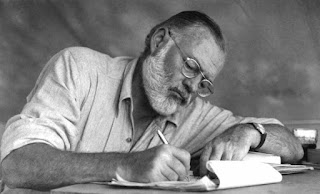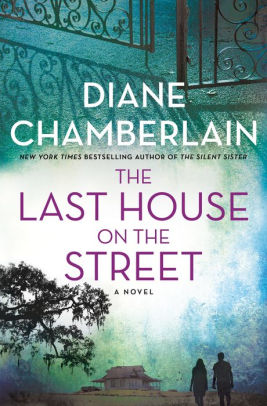As writers, we all have ups and downs, and so far this year I've been fortunate at Alfred Hitchcock's Mystery Magazine: they've published two of my stories--one in their Jan/Feb issue and one in their current (May/June) issue. Not since 1999, when I had stories in AHMM's March, May, and June issues, have I had stories appear there so close together. (I once went 3 1/2 years between publications at AH--unlike some of my superhero friends who seem to have a story in almost every issue.)
The funny thing is, my two recent Hitchcock stories, "Mayhem at the Mini-Mart" two months ago and "The Dollhouse" now, are quite a bit different from each other. "MatMM," which was originally titled "MacGuffins," was fairly short, was made up almost entirely of dialogue, and included no real mystery except for some deception in the way the two protagonists overcame the villain. "The Dollhouse" was longer and contained not one but two mysteries, real mysteries that the hero had to solve and that (if I did my job) the reader could figure out as well. There were a few similarities, too, in that both were set near where I live and neither had a lot of on-screen violence--but otherwise they were worlds apart, especially in that the first was a standalone story and the second was a series installment.
A series situation
The series/standalone difference is a big one. "The Dollhouse" was the eighth story I've sold featuring Mississippi sheriff Raymond Kirk Douglas and his ex-lawyer girlfriend Jennifer Parker--five have appeared in AHMM and one in Down & Out: The Magazine, and two more have been accepted at AH but haven't yet been published--and all those stories were written in a certain way. (More about that later.) Also, the stories in the series always have a sideline about the two main characters and their crazy on-again/off-again relationship. My standalone stories at AHMM are a whole 'nother ballgame. Those might be Westerns or science fiction or fantasy or humor or YA or anything else as long as they contain a crime, and they might be any length from flash to novella. During the writing process, the series stories provide more structure, the standalones more freedom. Both are fun to write, though, and I really can't say which I prefer. I think the series stories are probably easier to write, because in those the only thing I have to worry about is the plot. The main characters have already been created and can usually be depended on to act the way they're supposed to.
As I've mentioned, "The Dollhouse" features two puzzles in the same story. Investigating one of them is done as a favor to a high-school principal who's an old friend of the sheriff's, and involves nothing earthshaking or life-threatening. The other mystery is serious: the death of a local lawyer who left behind a vague clue to the identity of his killer. As usual the sheriff''s lady friend takes an active though unofficial role in the murder investigation, and (as is often true in real life) she provides most of the brainpower.
NOTE 1: My choice to include two mysteries instead of one in the same story is typical of the series, and I hope that adds a little extra oomph. Of my eight Ray Douglas mysteries so far, three of them--#1, #3, and #5--contained only one traditional mystery each, but #4, #6, and #7 contained two separate mysteries each and #2 and #8 featured three each. Making those multiple storylines interconnect was challenging but fun.
Building blocksIn "The Dollhouse," the less-important, school-related crime is introduced in the opening scenes and resolved in the final scenes, with the homicide investigation taking up the entire middle section of the story. My obvious reason for that is that I wanted the law-enforcement folks to spend most of their time on the more serious of the two matters. I did figure it was reasonable, though, to include the less-urgent mystery in order to offset and "bookend" what would've otherwise been a more intense story. Who knows if that was the correct decision--but it felt right to me, during the planning and writing and re-writing.
I also wanted the story title to tie into both of the plotlines. I did that by having one of the players in the more minor crime have a background as a dollmaker and letting that be meaningful to the solution of that part of the story, and also by giving the murder victim's law firm the name Dahl, Hauss, Stanley, Wells, and Yates--Dahl Hauss for short, so it's known as the Dollhouse to everybody in the county. This kind of thing is part of the fun of writing, and, as my wife can tell you, I'm easily amused anyway.
Also, like all the other stories in this series, it used an inside-joke Tuckerism in that it featured a sheriff's deputy named Cheryl Grubbs, which is also the name of one of my childhood schoolmates. I think I've mentioned before at this blog that I ran into Cheryl a few years ago at a booksigning after having not seen her since high school, and she told me she'd been a longtime fan and had always wanted to be in one of my stories. Well, be careful what you wish for; I told her I was about to start a new series and promised her I'd put her in it. (Truth is, Deputy Grubbs is now such a big part of these stories the sheriff can't fire her, so the real-life C. G. might've gotten more than she bargained for.)
NOTE 2: Since a lot of writer friends seem to be interested in these kinds of statistics, I submitted "The Dollhouse" to AHMM on 11/20/19, it was accepted on 8/25/20, and it was published on or around 4/15/22. This one took a little less time than usual from submission to acceptance and a little longer from acceptance to publication, but otherwise it was a pretty typical timeline, for my stories there.
Wrapping this upA few quick questions. If you write "series" short stories, have you found them to be either easier or more enjoyable to write than standalones? Why? Or is it the other way around--and, again, why? (Nosy SleuthSayers want to know . . .)
In closing, sincere congratulations to my friend R.T. Lawton for his Edgar win this past Thursday night. What a huge honor. Well done, R.T.!
See you next Saturday.










.jpg)




















